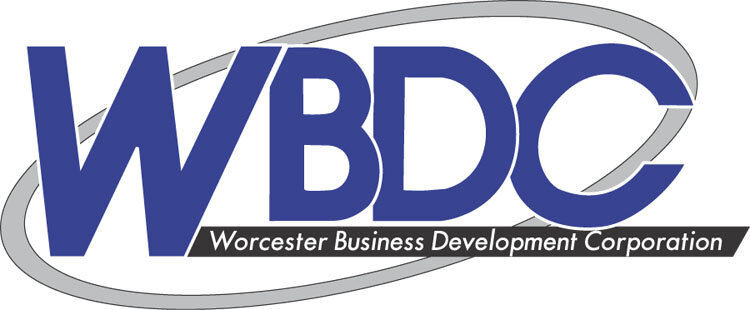Geothermal: Is it a good energy fit for Worcester? Here are the details
WORCESTER — Take a ride on Interstate 190, and as you’re driving past Saint-Gobain's sprawling campus, you’ll likely see some heavy demolition. Abandoned buildings are being knocked down to make way for what could be a project that represents Worcester's clean energy future.
A future that includes geothermal.
The Worcester Business Development Corp. is clearing the 51 acres that Saint-Gobain transferred to the development corporation at no cost in 2022 in order to develop the property into a commercial hub. Geothermal will be explored to power the buildings in the future development.
In simple terms, here’s how geothermal works: Holes are dug to access heat in the ground. Pipes filled with water send the underground heat into a building, where it combines with a pump. The result is heat in the winter and cool air in the summer.
Ground source heat pumps tap into a constant temperature in the ground that is around 55 degrees in New England, while geothermal digs deeper to access heat from the earth's core.
It’s clean, renewable energy with zero carbon emissions, a selling point in this time of global warming.
Initial costs a red flag
However, upfront costs for geothermal can be significant to cover drilling, pipes and equipment. That’s a prospect that could scare off some real estate developers. However, proponents say a combination of financial incentives plus expected energy savings over the long run will cover a portion of the initial expense.
The WBDC plans to spend up to $75,000 on a study to see if its land along I-190 can handle geothermal. Drills will bore into the Earth, and if they hit a ridge of rocks, it wasn’t meant to be.
If the study is successful, Worcester could have a geothermal project of considerable size and scope. Bigger than the one that powers Clark University’s Center for Media Arts, Computing and Design, which has wells 500 feet deep. Larger than geothermal that will supply heat and cooling to the new education and research building at UMass Chan Medical School, with its more than 70 boreholes, each 500 feet deep. Construction of that building is expected to wrap up in June.
The development corporation expects to hire a firm in the next 30 days to do the study. The work should take four to six months, said Roberta Brien, WBDC executive vice president. Saint-Gobain's buildings that remain in full operation and nearby properties, like the Abby Kelley Foster Charter Public School, could connect to the development corporation's geothermal system, said Brien.
“This is a unique development project for us,” said Brien. “It’s aligned with many of the city’s sustainability goals.”
John Odell, Worcester’s chief sustainability officer, knows those goal well.
Odell said the city is eager to see how the development corporation’s investigation plays out, as it could serve as a model for future geothermal projects in Worcester. He noted large-scale developments like this one headed by the WBDC work best for geothermal, because the cost and benefits are spread out over several properties.
Single-family homes can invest in geothermal, said Odell, but since installation costs are high, many homes go with less expensive air source heat pumps. Geothermal’s high upfront costs are a factor that can’t be ignored, said Odell.
“Conceptually, geothermal is really good, but the devil is in the details,” he said.
Worcester edged out by Framingham
The details didn’t line up in Main South, where Worcester failed to reach a deal with Eversource to pilot a geothermal project that would have included properties near the YMCA’s Central Branch on Main Street. Instead, Eversource went with Framingham.
Construction of the $14 million project is nearing completion. It includes 90 boreholes, each averaging 600 to 700 feet deep, that will heat and cool 37 buildings — 32 residential and five commercial — that serve 140 customers.
Residential and commercial customers in the Framingham pilot will pay $10 and $20 monthly, respectively, to access the geothermal system over the pilot's two-year period. Plus, each customer is responsible for paying their utility bill.
Pilot projects are part of the state’s effort to achieve net zero carbon emissions by 2050. The state is encouraging utilities that invested heavily in gas infrastructure to move into clean-energy alternatives.
It's all about the data
Worcester lost out to Framingham, said Odell, because Eversource supplies natural gas and electricity in Framingham. As a result, Eversource controls the data from both sources on the pilot project, a benefit when deciding if geothermal is something that Eversource wants to pursue in its territories.
Controlling the data wouldn’t be the case in Worcester, where Eversource supplies natural gas, not electricity. National Grid supplies electricity in Worcester, and not having control over the electricity data was a problem for Eversource, said Odell.
Nikki Bruno, vice president of clean technologies at Eversource, said Framingham was selected because it has a mix of fuel diversity — oil, gas, propane — that doesn’t put an added load on the energy grid. That compares to Worcester, where Bruno said there are many natural gas customers, but finding customers using oil and propane was difficult.
Worcester's grid 'constrained'
Bruno also noted that Worcester’s electric grid is “constrained.” She said investments are needed to modernize Worcester's grid so it can meet increased demand to run energy-efficient technologies such as heat pumps and geothermal.
Christine Milligan, principal program manager at National Grid, did not respond to a request for comment on whether Worcester’s grid can handle geothermal now and in the future. Milligan also didn’t respond to questions on how the utility plans to modernize Worcester’s grid, how much it will cost and who will pay for it.
National Grid previously said it will cost $2 billion to upgrade its grid in Massachusetts. Nicola Medalova, chief operating officer for electric at National Grid New England, made a stop in Worcester in November and said one or two generations of the utility’s customers will cover the cost.
The state gave National Grid the green light to build four geothermal pilot projects. The utility’s gas customers will pay for the pilots. Construction of the Lowell pilot starts this year. Another in Boston at the Franklin Field public housing complex is in the planning phase.
Milligan said in an email that National Grid is looking at ways to transition away from fossil fuels, and geothermal has significant potential to be part of the solution.
However, Worcester is not in the utility’s current plans.
“Since we see geothermal as an alternative to current gas infrastructure, we are currently targeting communities in our gas service areas. Therefore, we are not currently looking at Worcester, which is Eversource’s territory for gas,” said Milligan.
Learning curve
Bruno at Eversource noted the Framingham pilot is a learning opportunity. If the project's data is encouraging, Bruno said Eversource could partner with Worcester on a geothermal project down the road.
“We’re eager to work with Worcester,” she said.
Developer's perspective
Anthony Rossi is considering geothermal for his 253-unit apartment project on Harvard Street when construction starts. However, Rossi said it didn’t make sense for some of his completed projects in Worcester because each had 40 to 100 apartments. Those numbers are too small, given the high upfront expenses for geothermal.
A project needs at least 200 to 300 units to make the math work, said Rossi, because costs are spread out over more units.
He also noted there aren’t many subcontractors with the expertise to do geothermal, so they hike their fees. Worcester’s low water table is another problem, he said, because it drives up the cost of putting pipes in the ground.
New construction is the time to put in geothermal, said Rossi, because fixed costs, like pouring a foundation, are there no matter what. Retrofitting a building is not the time for geothermal, because the cost of replacing a current HVAC system is prohibitive.
It's the future
Despite the challenges, Rossi said geothermal “is the future” because heating and cooling systems that run on electricity, not fossil fuels, is where it’s all headed. However, what gets under Rossi’s skin is even when developers invest in electric systems for the good of the planet, utilities get approval from the state to charge more per kilowatt hour for electricity.
Rossi looks forward to the day when geothermal is the renewable source for heating and cooling and solar panels on roofs fully power the entire operation. It’s a combination that Rossi said cuts out the utilities.
“It could be the future,” he said.
Contact Henry Schwan at henry.schwan@telegram.com. Follow him on X: @henrytelegram.

